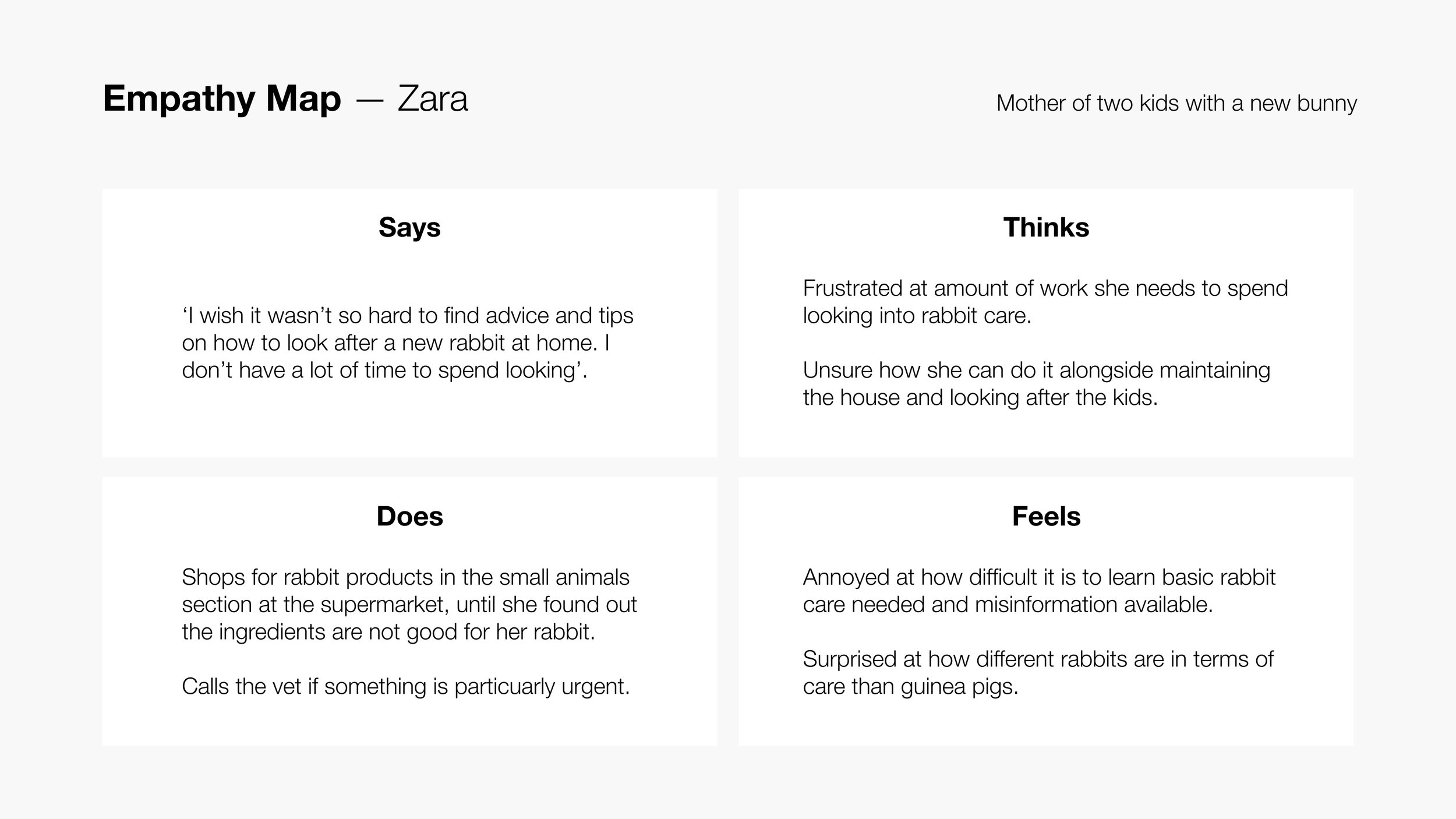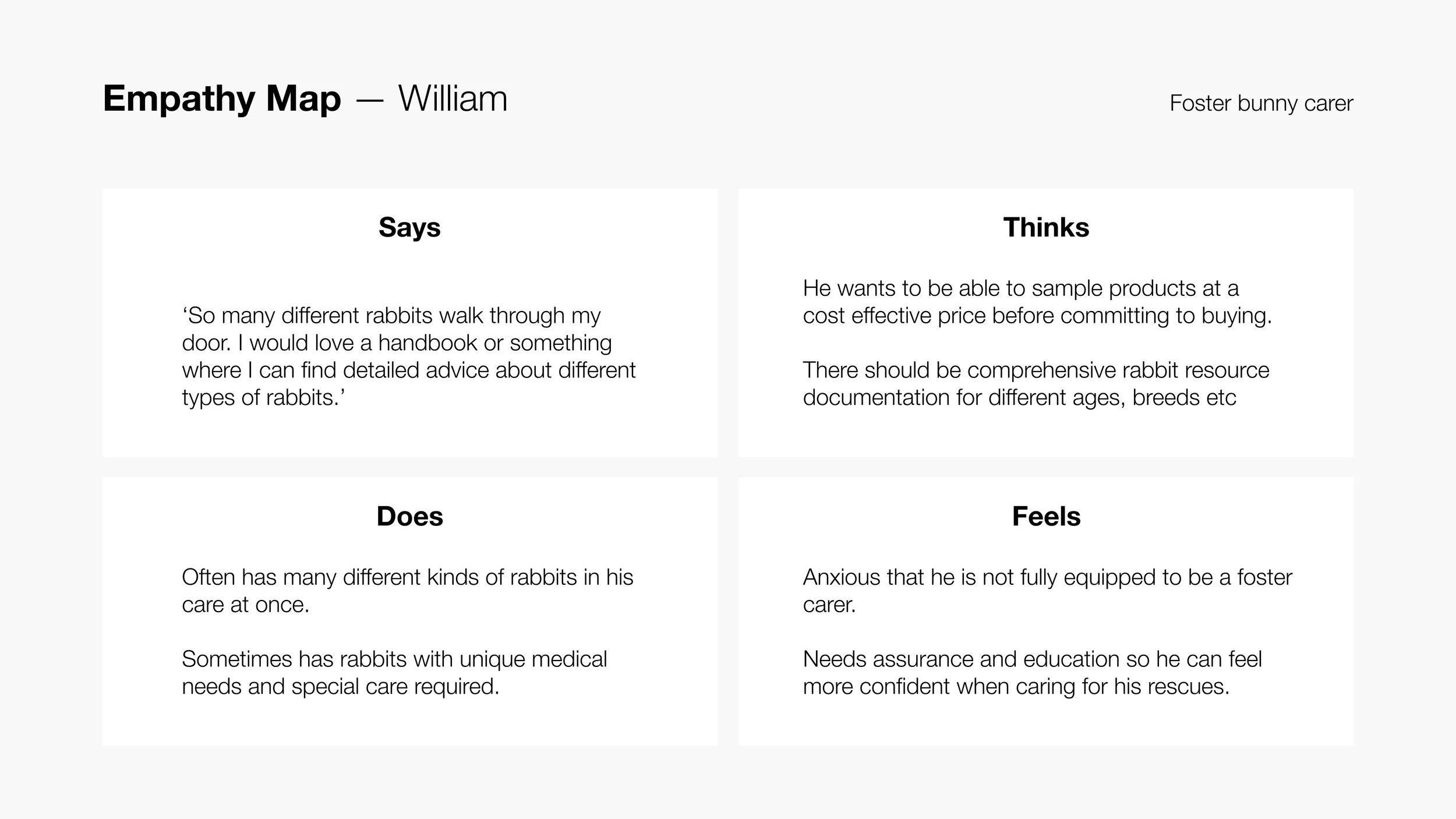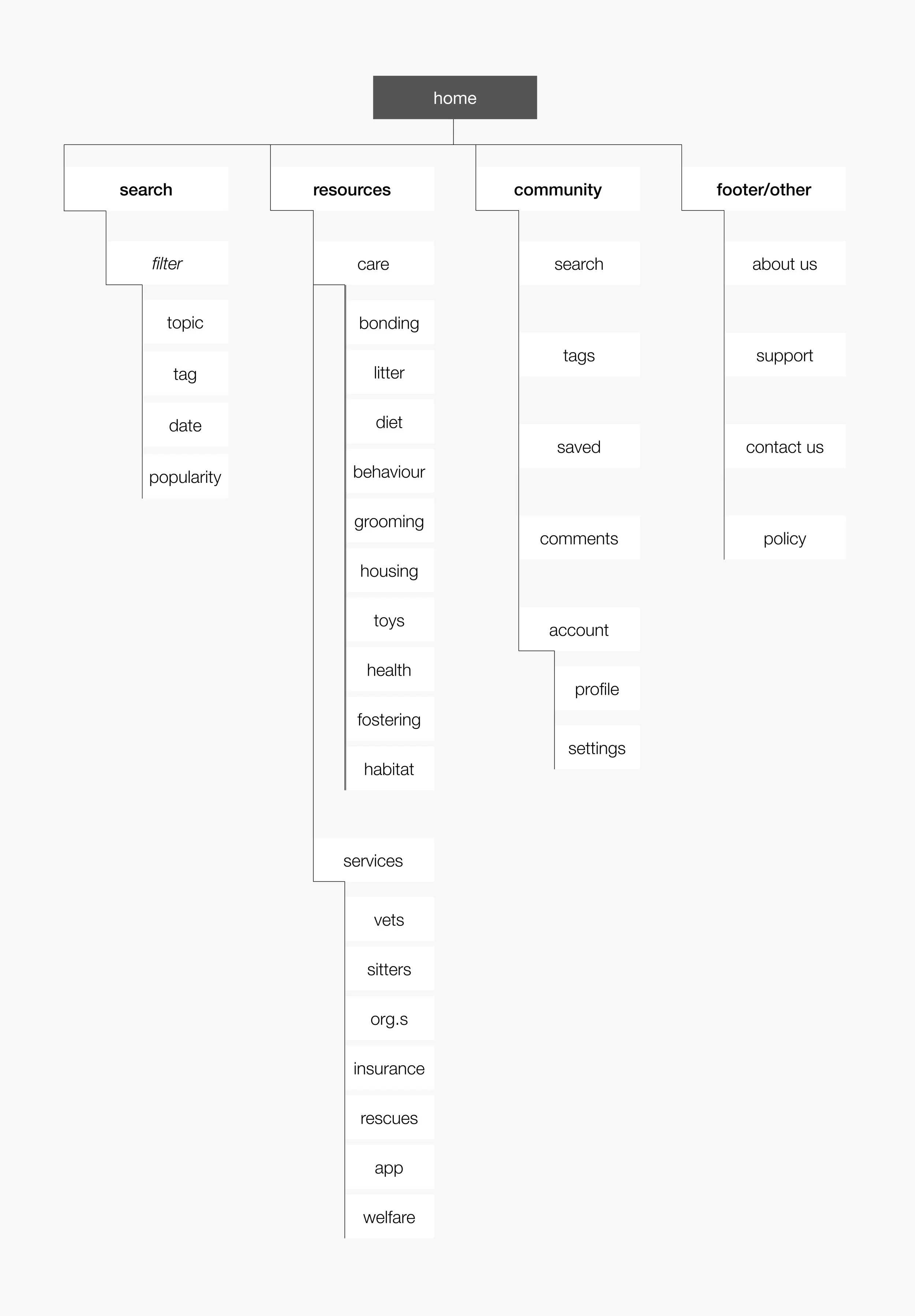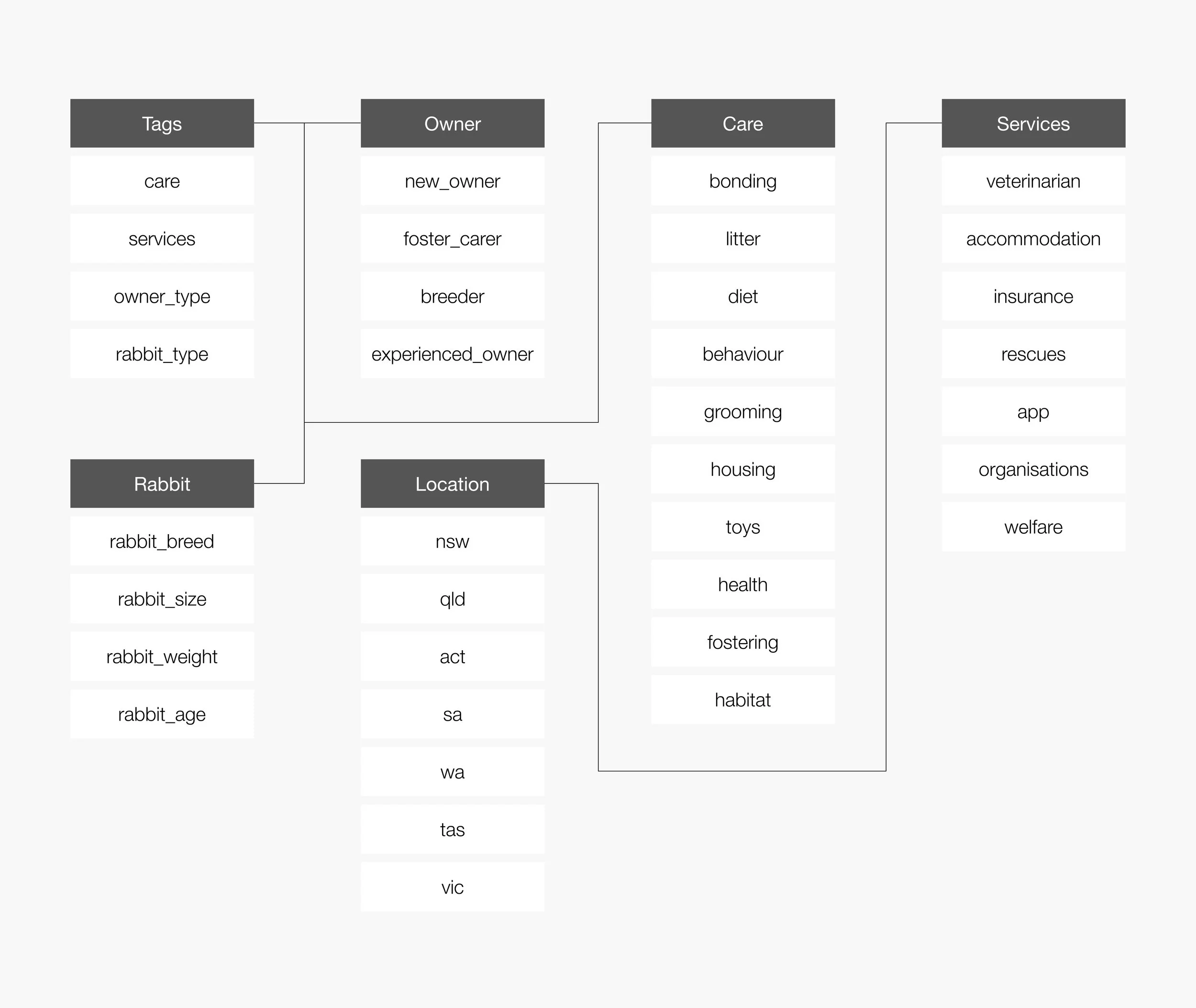Freelance
The Rabbit Society
“How might we make rabbit welfare practices accessible and informative for every owner?”
Case study for Responsive Web Design
2022
Motivated by the gap in Australian community-led resources advocating for ethical small animal pet ownership, I built a centralised and responsive web database to make the discovery experience of sourcing rabbit care simple and engaging.
Defining the problem
Rabbit care is complex, and there is a lack of centralised resources for Australian owners and licensed professionals to actively participate in knowledge sharing for rabbit care best practices. The RSPCA knowledgebase is a repository of trusted animal welfare science, advice and information. The site harbours a dedicated section for articles on rabbit care, however users cannot contribute, personalise, or interact with the content.
What if we developed a shared digital resource as a dynamic repository of trusted and relevant information on rabbit welfare?
Objectives
i. Foster community engagement to enable a growth mindset. As the userbase scales, so will the capacity of the product offering (more users = more data).
ii. Streamline finding specific, accurate and relevant information by user type and need.
iii. Educate new and existing members on leading guidelines for rabbit care by breed without judgement.
Understanding our users
To learn more about our target audience, I posted on various social media forums and pages with anonymous surveys requesting former and current rabbit carers to open up about their experiences with rabbit care. I asked what they felt was missing when they first starting learning, and what they still want to find out. I also met with a few carers, and discussed their sentiments in more detail.
Two common user groups emerged; first time rabbit owners, and seasoned rabbit carers. New owners felt overwhelmed with the surprising requirements of rabbits. Established carers experienced frustration and were exasperated at the amount of misinformation online, and a lack of breed-specific guidelines. Both wanted an easier way to connect with a local community and build upon shared knowledge.
User personas and empathy mapping
These insights informed the key user stories, and enabled us to start crafting typical user journeys our users might experience. I was able to determine common pain points, opportunities, and potential touch points to help users meet their goals.
Identifying the benchmark
The common theme amongst both user groups was a need to find helpful, specific, and current information. I created separate problem statements and hypothesises to address this theme. We can consolidate both into a universal statement below.
Hypothesis
i. If we make the discovery of relevant and high quality rabbitcare accessible to every user.
ii. Then we will positively contribute to the wider advocation and practise of ethical rabbit care by owners and carers.
Competitive Analysis
House Rabbit Society
An indirect competitor based in America. Key features include donation and membership portals, online store links, comprehensive documentation on rabbit care and information, resources to find local vets, online magazine digests, continuously updated articles, and dedicated sections for rescues and employment.
The Rabbit Sanctuary
A NSW rabbit rescue dedicated to rehoming surrendered animals, and advocating for responsible pet ownership. TRS offers a member community portal, bond cleaning services for Sydney-based owners, partner discounts, a donation portal, learning section, and extensive resources to connect potential foster carers and new owners with adopting.
RSPCA Knowledge Base
A direct competitor to The Rabbit Society. Their database model embraces search to find relevant categorical content for all legal pets in Australia. Users can download peer-reviewed scientific papers for trusted information, and the site uses a human-centred design language that is easy to understand.
How Might We
Simplify and generate site engagement?
I then started ideating on potential solutions to address the key HMW statement. Potential solutions included making the discovery experience of finding rabbit-care information fun, fostering a sense of community resources, and prioritising knowledge sharing of experienced rabbit owners and medical vet professionals.
Information architecture
Sitemap
The site leverages a database structure to achieve its primary goal — making information-rich rabbit care resources accessible to Australians. The experience needed to be dynamic, with advanced filtering and search capabilities. Personalising the experience prioritises the most relevant information for each user — providing capabilities to save preferences will surface articles, tags and topics that are curated for the needs of each rabbit carer.
Low fidelity prototyping
Desktop
I built a lo-fi prototype using the information architecture to begin structuring the solution. The home screen acts as a dashboard-type starting point for the user. Featured, upcoming and relevant content previews will be shown here. Under Resources, users can search and filter for a wide range of rabbit care information. This includes guides on care, available services in an area, and comment on topics with personal information and notes for others to see. In community, users can create a profile and save relevant articles, tags, and topics.
User research
Usability Study
To validate the solution, I then stress-tested the approach with n=5 users. I crafted a Research Study Plan, recruited relevant users through local community and social channels, and synthesised results. The key insights from the study was a need to clarify the functionality of tagging, more clearly differentiating page navigation, validating the need for accessibility and component functionality, and a solid onboarding process.

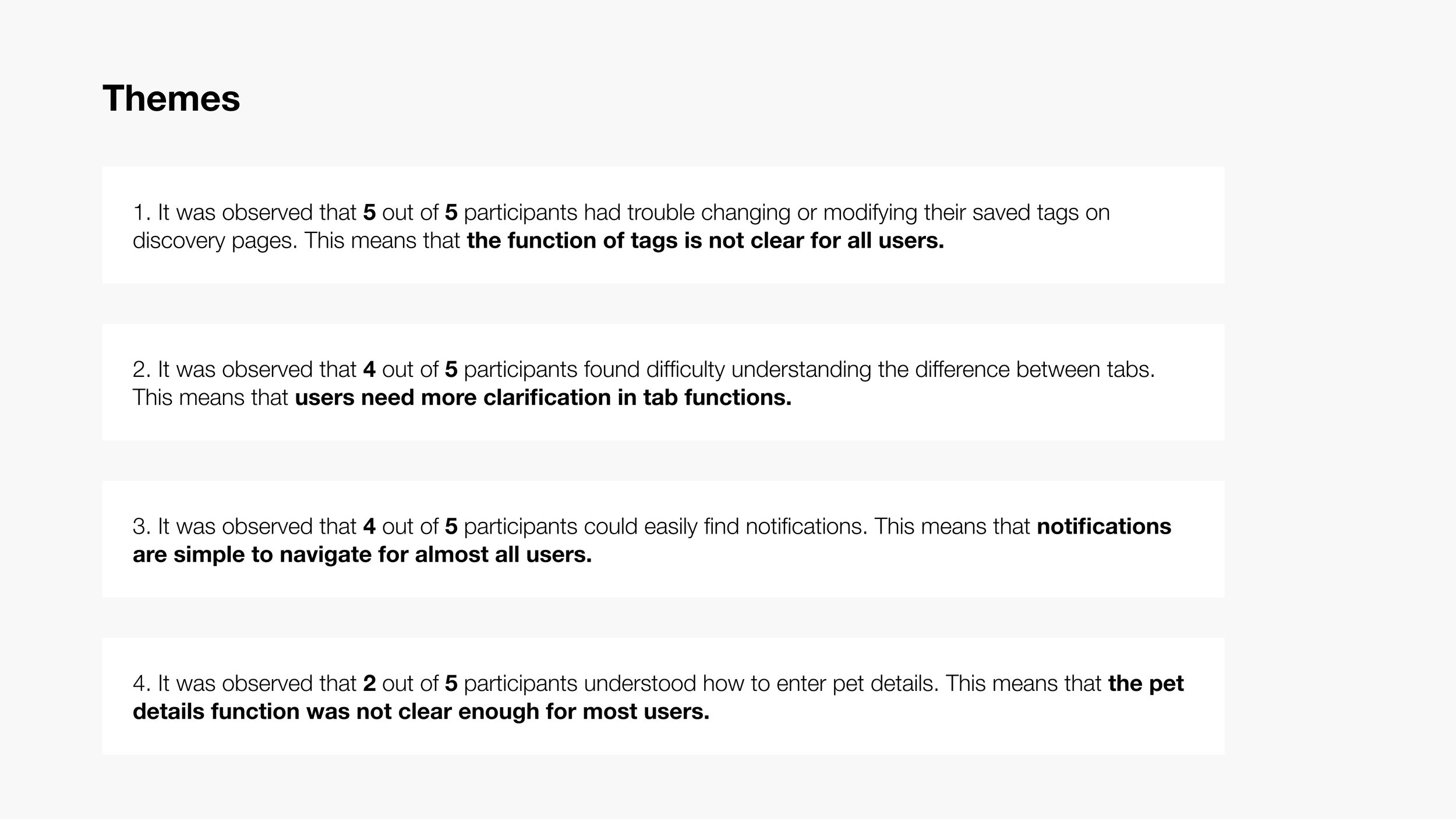

Solution and outcomes
Solution and outcomes
digital; ux; ui; experience; responsive design


